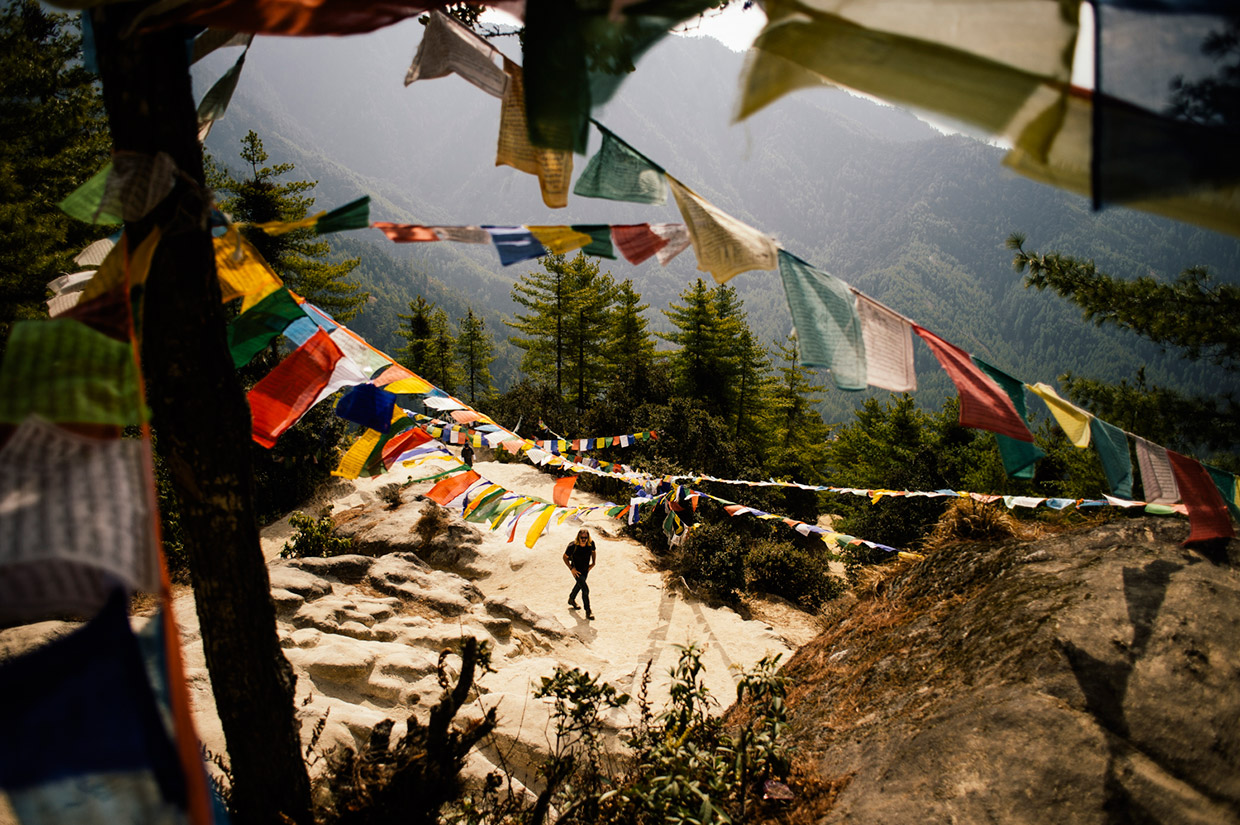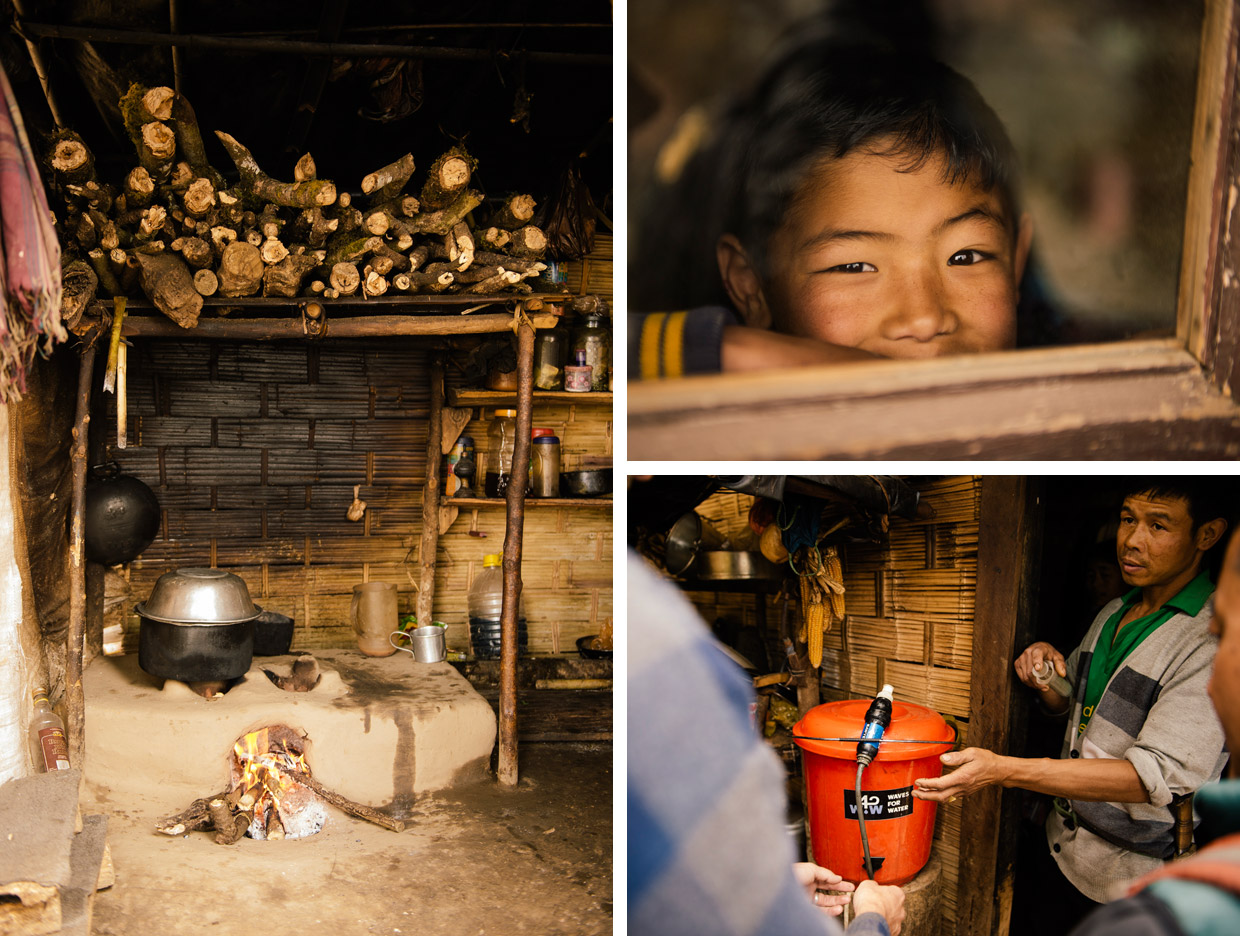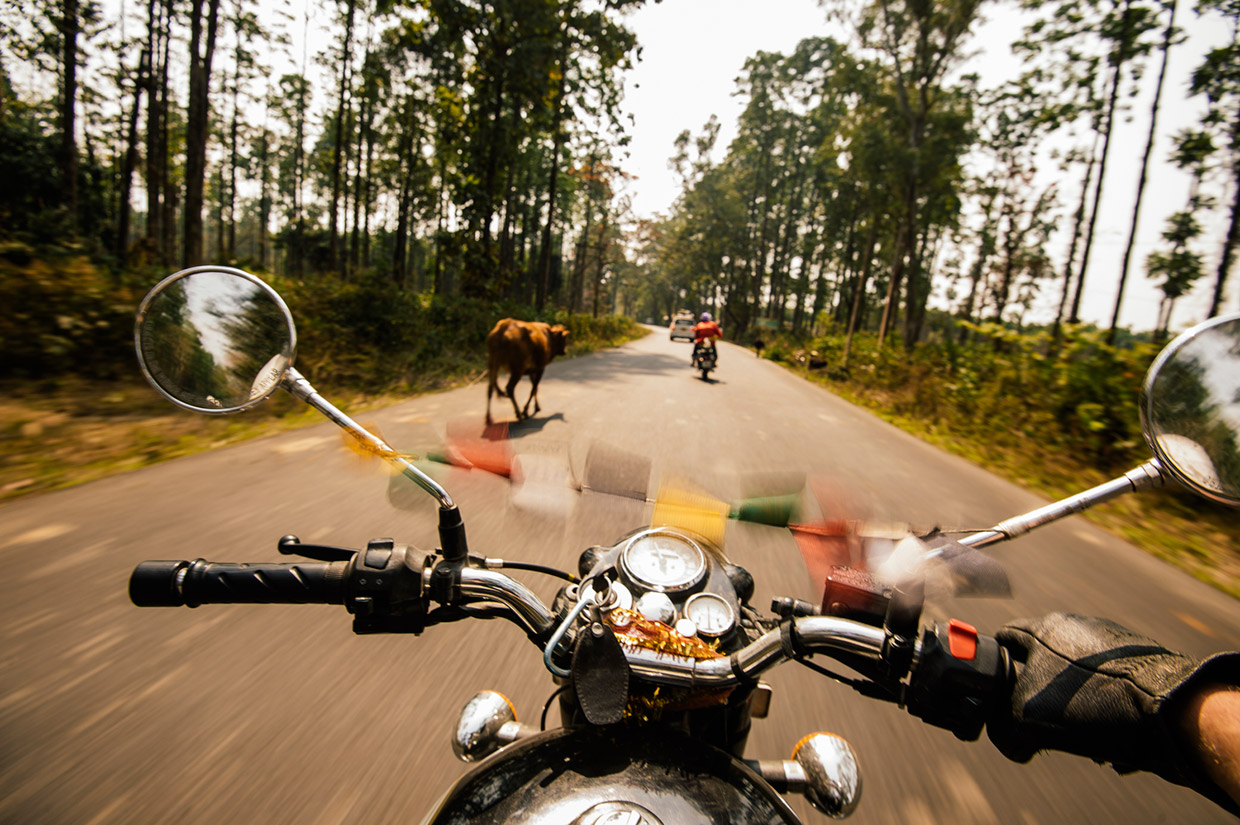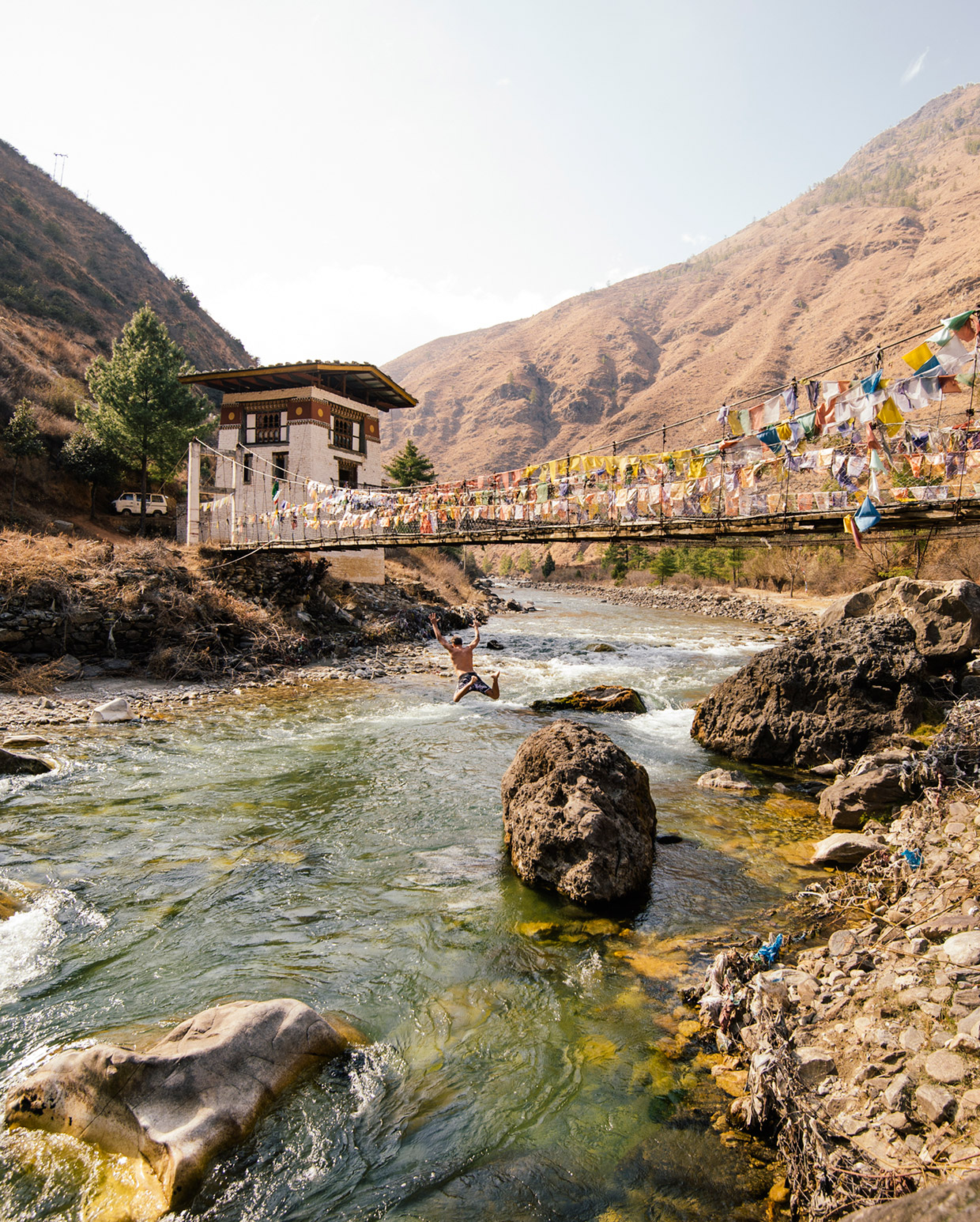Leap of Faith
An Interview With Jon Rose
Written by Andrew Mazibrada // Photography by Dylan Gordon
Jon Rose was on his way out of professional surfing, spending more and more time riding motorcycles through remote wilderness and hiking in the mountains. He’d spent most of his life since high school as a pro surfer and now needed a focus for the rest of his life. Sadly, that focus wasn’t quite presenting itself. His father had recently founded a nonprofit organisation to help teach African communities to harvest rainwater, and maybe this is what inspired his son Jon enough to create what he once thought of as his own “pet project”. His idea was to deliver water purifiers to places he had traveled as a pro surfer, places he knew desperately needed clean water. What came next defined that process and was more than a little down to the universe’s sense of great timing.
Sidetracked: A recent article profiling you said the catalyst for Waves For Water was you trying to figure out your next move. You were fading from professional surfing and spending more time riding motorcycles through Baja and hiking in the mountains, wondering what to do with your life. Can you tell us a little more about that time?
Jon: I was a pro surfer for 13 years and I turned pro straight out of high school. I was on tour for about six of those years; the rest was spent pro freesurfing. I was paid to explore amazing places and work with film companies, magazines, and so on. It was a wonderful life for the most part. I became a surfer because that was what I was passionate about as a child. My home was in a beach town and my life was always going to be about beach sports and water sports. In fact, the beach became the perfect babysitter for me, one my dad found to be a cheap one too. Yet I hit a certain point – I was a realist. I was never going to be the best, but I’d had a good run. I knew it was a great platform to go out and get some amazing world experience. I had always been conscious of the world around me, but I was also self-absorbed and self-indulgent. Pro athletes are like that, especially in solo sports. Yet the moment came when I decided I was not going to stay too long and milk it. I hit a point where the kids coming up were better than me. I was approaching 30, my contracts were getting smaller. I had passed the curve of the arc. I started to look at the next chapter of my life – bikes and photography were my other passions. I had only focused on one thing my entire professional life so I was then in transition. Moving on was a natural progression for me.
I think it also comes from the way I was raised. I have always been an outdoors person. My dad was a ski instructor and rock climber. He took me to places like Yosemite, just as my grandfather had taken him to those places. It was in my blood to be adventurous. I have known that for as long as I’ve had memories. When I was nine years old, my parents got divorced and I went with my dad. We jumped into our pick-up, loaded the surfboard, bike, and sleeping bags and camping stoves, and off we went to Baja. We camped all along the way, always on the beach. He bribed us onto a ferry to Puerto Vallarta, Mexico, and we went bushwacking for months. It was unpredictable and unknowable and I loved it. As a consequence, I see the world as limitless – there is nothing you cannot do, no ceiling. What do I want to explore and what do I want to do? We had nothing, yet we achieved so much. It was the best time ever. My dad always showed me that from an early age. A lot of what we do in terms of our work in the field and the storytelling side of our business comes from an understanding of storytelling because Dad had William Burroughs and Jacques Kerouac audio tapes in the car on our road trips.
What made you think of water purifiers? What made you start Waves For Water?
It was initially intended to be something of a pet project. It was selfish in a way – I did not see it as a job. I wanted to be able to explain to my new boss that this was what I was doing – to have genuine reasons to go to these amazing places I had a longing to see. But I wanted to help too. I chose water because I was no kind of expert; not a scientist nor brought up in the Peace Corps. I am good at being out in the world, dealing with people, finding solutions to problems, and water resonated because it seemed such a solvable issue. I understand cultures and I understand that being sensitive and conscious of all society’s nuances, be they cultural, religious, gender-based, or whatever is important. It’s not about being a salesperson. We are not selling anything so I think we can connect better with these people. They have no hopes other than to work with us. We correct imbalances that exist simply by working with people who need us. They don’t have access to the solutions and I felt those solutions existed not only existed, but even a layman like me could provide them. It was about access rather than technology. That made sense to me. We dig wells too – once we do our needs assessment, we design a program with whatever solutions are needed.



You’ve described Waves For Water as like a “military special ops unit within the NGO world, known for going places and accomplishing things that larger organisations, immobilised by bureaucracy and protocol, cannot.” How do you do this? How did you come to realise this was the way to approach the project?
We like to get into a place quickly, under the radar and avoiding red tape. We want to get the job done quickly and efficiently and then get out before anyone can tell us that we shouldn’t have do it that way. Disaster situations are urgent, so we meet them with the same degree of urgency in the way we work.
Where did that philosophy come from? That’s a tough one. It came from when I first launched the organisation in Haiti, where I lived for two years. It was the epicentre of the Aid World, but I was green when it came to disaster relief. I was rubbing shoulders with experienced people; they were almost on top of each other over there. I was camping with the 82nd Airborne. I observed everything everyone did, and that was my schooling. I fine-tuned who they all were and what were doing; worked out how we would operate. I know what we do is different to building houses or solving health issues, but access to clean water is straightforward. I am not going to let red tape bog down the process. People are caught up in bureaucracy and it slows things down – I saw it a lot with the UN (who are one of our partners) and we work with the US Military which is also bureaucratic. I just didn’t want to work that way.
We go into a small village, nimble, black-ops style; decentralised, working from bottom up. We don’t talk to leaders and politicians – there are too many vested interested, too many people who have in mind personal or political gain. We enlist community players who are leaders in their own right, but not politicians. You build a network of people who are already helping their community, but you are giving them new tools, organically and efficiently. By the time it gets to the politicians, they have no choice but to get behind it. They often wish they knew about it earlier, and had been able to use it themselves. It is a tactical way of working; lean and nimble, covert. Not hiding, just avoiding the problems and doing it quickly and efficiently. That said, we have never got in hot water with any of these tactics.
You say you find local leaders in the places they go, and empower them to take ownership of the project and help their communities. How do you find them? How do you know these are people you can trust?
There’s a saying – there is nothing that replaces time spent. You have to be willing to spend time in the area and identify these people. I have a system, characteristics I am looking for in the people I want. It’s not always the people you expect either. You might spend a month there and observe all the people in a particular town or village, and find it’s actually a 17 year old kid. That happened in Liberia. It was so clear the way the community responded to him. This diamond in the rough. He was so good and had so much potential. I admit I took a chance, although I was already confident. There are also obvious other fits – medical clinic directors, school teachers, religious leaders, community organisers who are already helping and we add a layer to what they are doing. Maybe even a local businessman. We are trying to empower them.
Tell us about the Bhutan trip. First, what was your aim?
It was a place I had always wanted to go. Luckily, we have country directors, even region directors, who are two guys who run trekking tours. They are the perfect people for the work we do – trekking is itself very logistics-heavy. They’re such valuable assets. I asked them about connections in Bhutan, and they told me only 1,000 people are let in a month. It was hard to get into, but they facilitated that process. This was somewhere I really wanted to go and we didn’t have a budget this time – we just went. They organised the bikes from India (Royal Enfield are really common there). We had headquarters in West Bengal and often check on work there. From West Bengal we went into Bhutan; we were on a schedule, but they were flexible with us.
How did the idea come to you and why Bhutan?
My life has been driven by exploration, discovery, and adventure for as long as I can remember. It was tunnel vision with surfing, but there was a love of adventure and being able to go to new places and explore. Waves For Water is thriving global humanitarian aid organisation, providing access to clean water for seven million people. I could never have dreamed of how big it would become. It is also a platform to exercise all of my passions – to go do the things I love and help along the way. That’s our tagline. There’s a handful of places on my personal list, the list of places I really want to visit before I die, that we can probably work. Two or three that I obsess over – purely on a soulful and adventure level that I think about weekly. Bhutan had always been one of them. A friend told me it was the best place he had ever been to and that was saying a lot. It was in an area we work a lot in – Nepal, Myanmar – so I wanted to go there. I wanted to enjoy our time there and work on the way. An awesome adventure through this magical kingdom I had always wanted to go to.



What challenges did you face whilst organising and planning the trip?
If you do anything like this on a bike, the main challenges are around safety. Five guys riding eight hours a day for two weeks – law of averages, you need to be careful. Clearance was handled for us. Standard stuff like that. India is not easy for Americans and one guy had to fly back out because of his visa difficulties. You are going to a place that is virtually closed off to foreigners. There are cultural sensitives too – this is one of the big centres of the Buddhist religion. A lot of stuff is about you wanting to make sure you are not the stereotypical Americans on motorbikes coming through.
Were there any moments that surprised you on the trip? Anything that sticks in your mind?
The reality is this trip absolutely blew my mind on so many levels. I feel jaded or desensitised to travelling because I have done so much. I did 500,000 miles last year (2015) and I have been exposed to so much stuff. To go to a place and have my mind blown was humbling and amazing. It was so great. From a physical level there was the beauty in what I was seeing. There was energy to the place too, largely in part down to their buddhist culture. I don’t know what it was about 2015, it was a hard year for me personally. The feeling was “how the fuck did I get here?” I was feeling the pressure. Perhaps it’s the responsibility? This peaked in 2015, specifically towards the end of the year.
I was in a layover in Miami and I called my dad to tell him this. He normally pulls me out of slumps like that. He was down too and I remember feeling I was in a dark place. Something needed to change, and I felt like there was a pattern going on. I needed to start fresh. I needed to pattern-interrupt and I didn’t know what would do it. I was at my wits’ end. For me, it was about making a conscious choice to do something about it. I came out of there, from Bhutan, transformed, two inches taller and brighter.
I’m excitable and I have a lust for life and in a place with that much beauty, you feel dwarfed by it, overwhelmed. It’s a very steep place, winding roads – riding that on a motorbike you could go on forever. There are reams of thousand-foot cliffs below you, the way the sunlight hits the road, or prayer flags right next to you, or giant buddha statues – it all inspires you. It was a high concentration of epicness. Mountains, to rivers, to that spiritual factor. Over and over. When I am on the road I ride with music. There was one moment, where there was mist in the air, sunlight came through the trees, when the perfect song came on. It was climactic. I was throwing my fingers in the air like rapper – it was ‘On the Way Home’ by Fellini Félin. I think you have to put yourself on the spot to have those experiences. Take some risk and do it, in our case, on bikes. All of these hard choices lead to dynamic climaxes like that.
We recently featured a Moment from the trip in Volume Seven of Sidetracked Magazine. How did that come about?
It was my birthday. Traditionally when I travel anywhere through the countryside, if there is a body of water, I want to jump in. It actually gives me a task, something to seek out. Bhutan was no different. We looked at maps, trying to find somewhere to do it, but as you get higher up, it gets cold and we were actually doing less and less each day. In the capital city, Thimphu, which is a deeply spiritual place, we met up with Bhutan dragons motorcycle club. They were really cool. We decided to go sightseeing, visit some monasteries; perhaps visit the biggest sitting buddha in the world. But in truth I just wanted to get out of there. I had the sort of feeling that we were locked in the city and I wanted to leave and see the countryside.
It was 1.30pm, early afternoon. It was a winding road running though canyons and river. I found this little old road, weaving its way through the rock and lush green punctuated by bright flashes of colour. I wanted to jump the water, but it was so cold. A storm rolled in just as we were leaving the capital and it was really close then. Its sucks riding in the rain too.
But suddenly, the sun joined us. It was a canyon, so where there was shade it was bitter. For a long while, we hung out next to the river, the water glacial melt running down from above us. I stripped down, strode over to a rock I’d had my eye on since we arrived; one that was taller than I was and below which there was an eddy, ten feet deep. Then I spider monkeyed into the river. The fall seemed to last for seconds, the water rushing up to meet me and engulfing me. The shock was palpable, stunning in its intensity. It was a polar plunge, freezing, yet it felt so invigorating. It was such a beautiful moment in time – to me, utterly indicative of the power of choice and the refusal to be swayed by fear. Washing away the dirt of the last many months. The best birthday present ever. I think that moment got me ready for the rest of the year!

Read Jon’s story, A Leap of Faith, in Sidetracked Volume Seven
For more information about Waves For Water visit wavesforwater.org
Twitter: @wavesforwater
Instagram: @wavesforwater
Facebook: /wavesforwater
Photography by Dylan Gordon
Website: dylangordon.com
Instagram: @dylangordon



